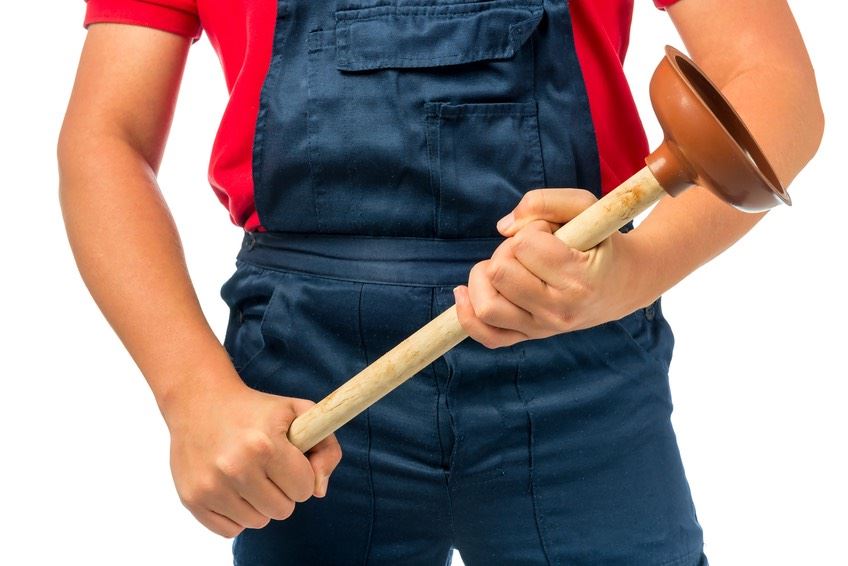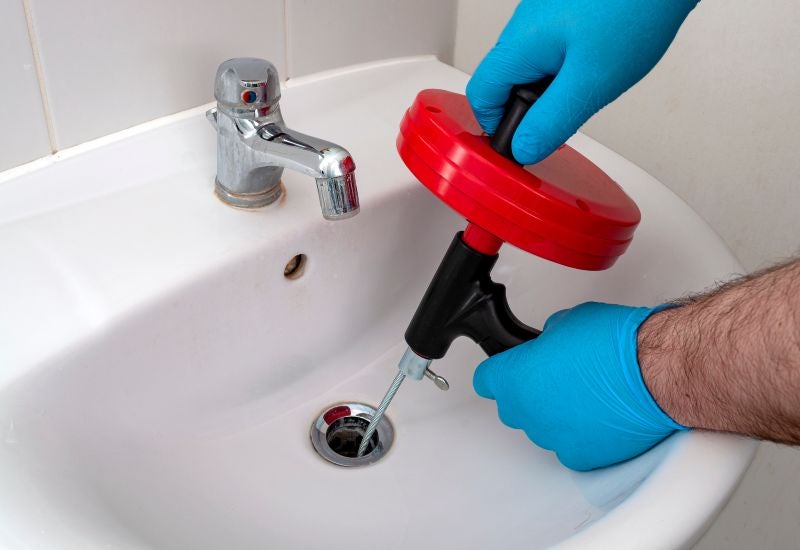Applying Plunger and Drain Cleaner: Effective Techniques
Applying Plunger and Drain Cleaner: Effective Techniques
Blog Article
The content which follows about Here's How to Correctly Use a Toilet Plunger is amazingly enlightening. Don't skip it.

Introduction
Appropriate maintenance of family drains is vital for stopping clogs and ensuring smooth water flow. One of the trick tools in every house owner's toolkit is the bettor, along with numerous drain cleaners designed to take on stubborn blockages efficiently. This article checks out exactly how to utilize plungers and drain cleansers successfully to keep your drains streaming easily.
Section 1: Recognizing Plungers
Kinds of Plungers
There are a number of kinds of plungers available, each made for different kinds of drains and clogs. One of the most typical types include cup bettors, flange plungers, and accordion bettors.
How Plungers Work
Bettors work on the principle of producing stress and suction to dislodge clogs. When appropriately applied over a drain, they develop a vacuum that can pull out particles or break up clogs.
Choosing the Right Plunger
Selecting the best plunger depends on the sort of drain and the nature of the clog. Cup plungers are suitable for sinks and bathtubs, while flange plungers are much better matched for toilets due to their layout.
Typical Errors with Plungers
Staying clear of these blunders makes certain effective plunging: improper seal around the drain, inadequate pressure, and unclear bordering particles.
Area 2: Using Plungers Efficiently
Prep work
Before diving, make certain the bettor covers the drain totally and develops a limited seal. Clear any kind of visible particles around the drainpipe opening.
Technique
Beginning with gentle plunging activities to develop suction. Rise pressure slowly, using a constant rhythm. Repeat as needed till the drain removes.
Fixing Tips
If plunging doesn't work, try adjusting the seal, using petroleum jelly for a much better seal, or using a different sort of plunger.
Area 3: Comprehending Drain Cleaners
Types of Drain Cleaning Company
Drain pipes cleansers can be chemical or chemical. Chemical cleansers use solid chemicals to dissolve blockages, while enzymatic cleaners utilize all-natural enzymes to break down raw material.
Exactly How Drain Cleaners Work
Chemical cleaners respond with blockages to dissolve them, while enzymatic cleansers break down natural products like hair and grease without damaging pipes.
Safety Considerations
Constantly put on gloves and eye protection when making use of chemical drain cleaners. Make certain ample ventilation and follow supplier guidelines carefully.
Eco-Friendly Alternatives
Take into consideration using vinegar and cooking soda or enzyme-based cleaners for environmentally friendly alternatives that are more secure for pipes and the atmosphere.
Section 4: Utilizing Drainpipe Cleansers Successfully
Application Methods
Pour chemical cleaners straight right into the drain opening. Permit them to work for the recommended time prior to flushing with warm water. Chemical cleaners must rest over night.
Preventative measures
Prevent blending different types of cleansers, as this can generate poisonous fumes. Never make use of chemical cleansers along with a bettor, as splashing can happen.
Handling Stubborn Obstructions
For consistent clogs, consider using a pipes serpent or calling a specialist plumber to avoid damage to pipelines.
Verdict
To conclude, understanding exactly how to utilize bettors and drain cleaners successfully is vital for maintaining healthy pipes systems. By picking the right devices and strategies, homeowners can tackle minor clogs and avoid significant plumbing problems down the line.
How To Properly Use A Plumbing Snake To Clear Drains
When any drain clogs in our home arise, we tend to gravitate toward the plunger and little else. In cases where the plunger and its vacuum-created pressure are not able to clear clogs, many immediately move to harmful chemicals or simply call their plumber to fix the issue.
we’re happy to help with all drain cleaning needs and concerns. This includes informing you on a few other home remedies you may have at your disposal for minor to moderate clogs, one of which is the use of a plumbing snake. Many people have never used one of these before – let’s go over the steps to take when your drain clogs and you have a plumbing snake available.
Attempt Plunger Use
The first step here, as we noted above, should indeed be to grab your plunger when you notice a drain clog and attempt to resolve it this way. If you’re unsure how to use a particular type of plunger, our plumbers can answer any questions you have. If this doesn’t do the trick, however, you move on to the snake.
Locate And Prepare Snake
A plumbing snake is a metal or plastic device that’s generally about a quarter of an inch thick. It’s design with significant extensions, meant to reach down into your clogged drain and push the clog out. Snakes also contain drain augers that will latch onto and push stubborn blockages.
If your plunger doesn’t clear a clog, locate your snake and bring it to the drain in question. We also recommend keeping a bucket nearby to collect the clog once you pull it out, plus we’d advise wearing goggles and possibly protective gloves.
Feed Snake
Once you’re ready to go, feed the snake slowly down the drain, using the crank device it comes with to keep it moving until it finds the clog. Once this happens, much of the clog will be latched onto the coil so you can pull it out, while the rest will simply break up and flow downward.
Detach Debris
Remove the snake slowly from the drain, and once you’ve done so, pick off any debris that’s stuck to the coil. This is another area where wearing gloves is a must.
Flush Drain
Finally, take a few minutes to ensure the snake has done its job correctly. If you’ve been using it on a toilet, flush the toilet a couple times and make sure everything flows well. If you’ve used it on a different drain, flush it with some room temperature water.
https://www.mybuddytheplumber.com/blog/how-to-properly-use-a-plumbing-snake-to-clear-drains/

Application Methods
Pour chemical cleaners straight right into the drain opening. Permit them to work for the recommended time prior to flushing with warm water. Chemical cleaners must rest over night.
Preventative measures
Prevent blending different types of cleansers, as this can generate poisonous fumes. Never make use of chemical cleansers along with a bettor, as splashing can happen.
Handling Stubborn Obstructions
For consistent clogs, consider using a pipes serpent or calling a specialist plumber to avoid damage to pipelines.
Verdict
To conclude, understanding exactly how to utilize bettors and drain cleaners successfully is vital for maintaining healthy pipes systems. By picking the right devices and strategies, homeowners can tackle minor clogs and avoid significant plumbing problems down the line.
How To Properly Use A Plumbing Snake To Clear Drains
When any drain clogs in our home arise, we tend to gravitate toward the plunger and little else. In cases where the plunger and its vacuum-created pressure are not able to clear clogs, many immediately move to harmful chemicals or simply call their plumber to fix the issue.
we’re happy to help with all drain cleaning needs and concerns. This includes informing you on a few other home remedies you may have at your disposal for minor to moderate clogs, one of which is the use of a plumbing snake. Many people have never used one of these before – let’s go over the steps to take when your drain clogs and you have a plumbing snake available.
Attempt Plunger Use
The first step here, as we noted above, should indeed be to grab your plunger when you notice a drain clog and attempt to resolve it this way. If you’re unsure how to use a particular type of plunger, our plumbers can answer any questions you have. If this doesn’t do the trick, however, you move on to the snake.
Locate And Prepare Snake
A plumbing snake is a metal or plastic device that’s generally about a quarter of an inch thick. It’s design with significant extensions, meant to reach down into your clogged drain and push the clog out. Snakes also contain drain augers that will latch onto and push stubborn blockages.
If your plunger doesn’t clear a clog, locate your snake and bring it to the drain in question. We also recommend keeping a bucket nearby to collect the clog once you pull it out, plus we’d advise wearing goggles and possibly protective gloves.
Feed Snake
Once you’re ready to go, feed the snake slowly down the drain, using the crank device it comes with to keep it moving until it finds the clog. Once this happens, much of the clog will be latched onto the coil so you can pull it out, while the rest will simply break up and flow downward.
Detach Debris
Remove the snake slowly from the drain, and once you’ve done so, pick off any debris that’s stuck to the coil. This is another area where wearing gloves is a must.
Flush Drain
Finally, take a few minutes to ensure the snake has done its job correctly. If you’ve been using it on a toilet, flush the toilet a couple times and make sure everything flows well. If you’ve used it on a different drain, flush it with some room temperature water.
https://www.mybuddytheplumber.com/blog/how-to-properly-use-a-plumbing-snake-to-clear-drains/

I came across that review on Here's How to Correctly Use a Toilet Plunger while doing a search on the search engines. Loved our blog? Please quickly share it. Let somebody else find it. We take joy in reading our article about How to Unclog Your Sink with a Plunger.
Book Your Appointment Report this page